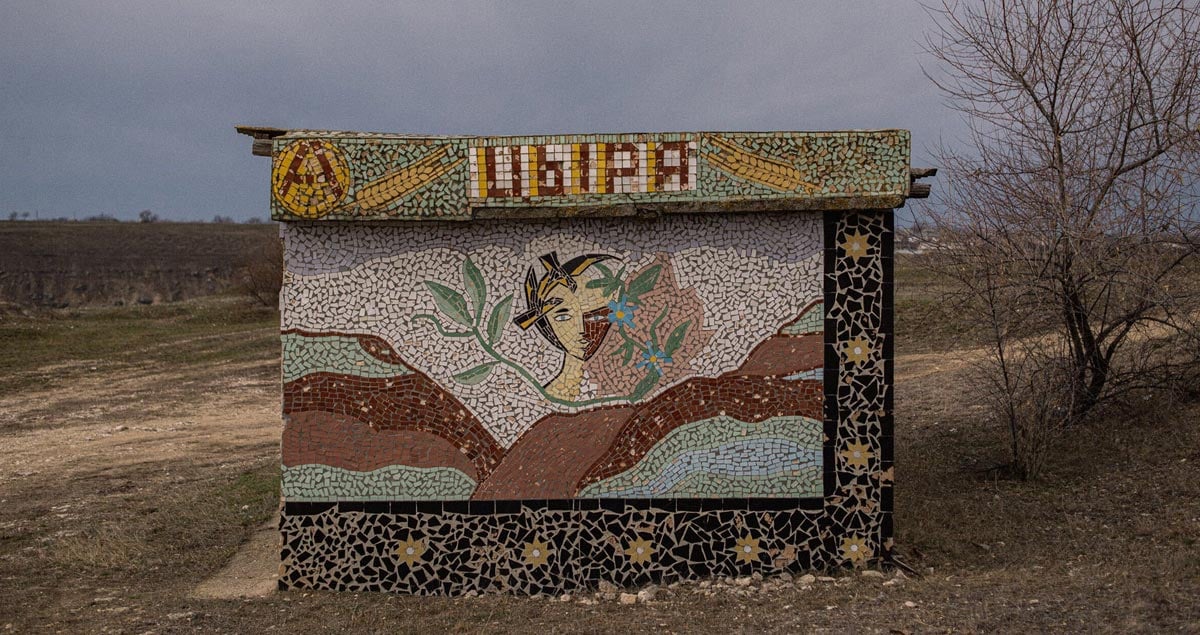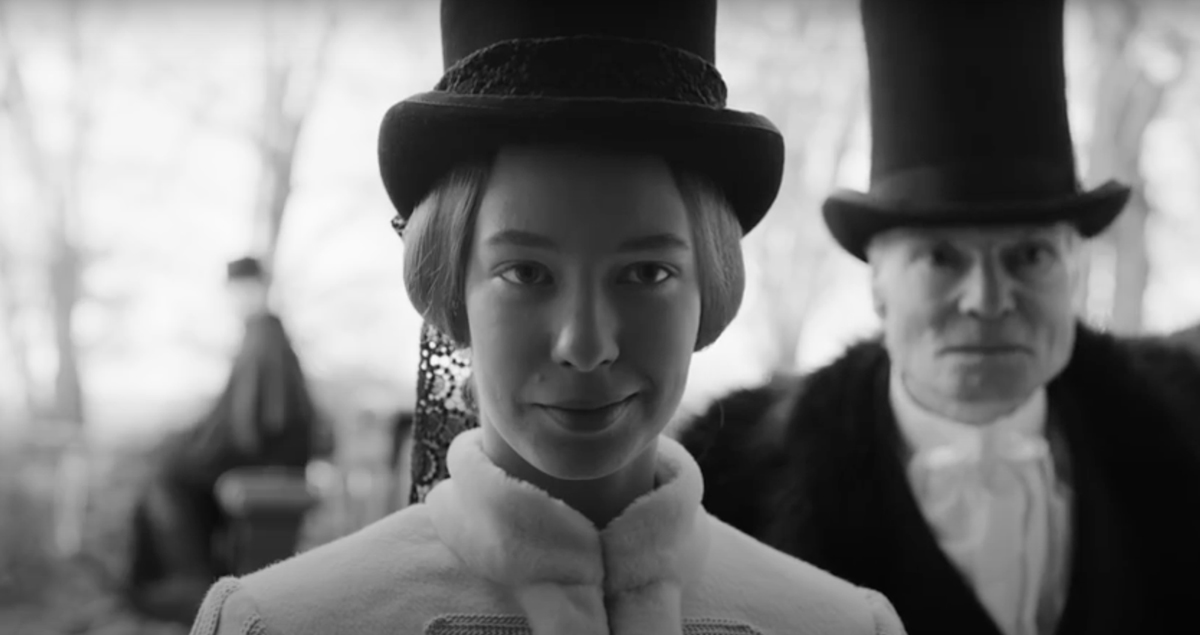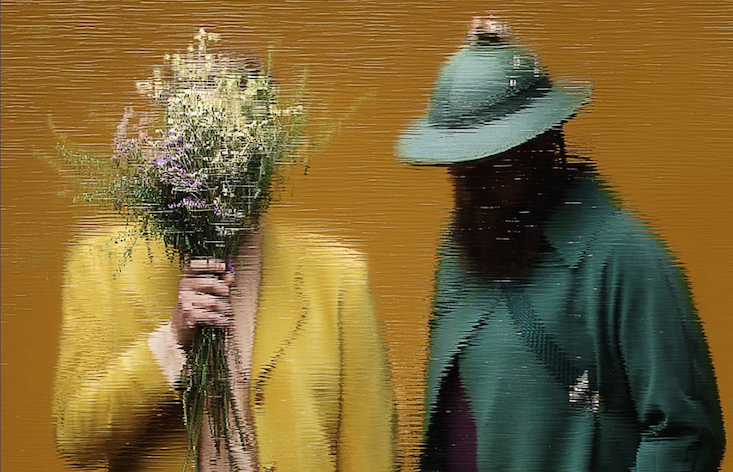Moss fails to heal the wounds of Lithuania’s memory wars
In Lithuania, a statue of writer Petras Cvirka has becoming a flash point in a larger debate on the fate of the country's Soviet-era monuments. But while creatives initially hoped that turning the statue into a living artwork could help the country come to terms with an often difficult debate, officials have since taken action to remove the controversial monument once and for all.
“Grutas!”
A man in the crowd yells as the bronze statue of Lithuanian writer Petras Cvirka is lifted off its base in a leafy park in the heart of Vilnius. His shout causes scattered laughs from the crowd of onlookers, all standing behind a hastily-erected metal fence. The barrier will keep camera-wielding reporters and spectators at a safe distance as construction workers tear down one of the capital’s last Soviet monuments. “Grutas!”, the man yells again. It is clear he is rooting for the monument to join ranks of other discarded Soviet-era sculptures in Grutas Park, in the lush forests of southern Lithuania.
The statue’s fate, however, remains undecided. The process that proceeded its removal was an ordeal which split the country on the lingering question of memory politics — the question of how to deal with monuments from the country’s Soviet past. While most symbols of that era are long gone, some argue that the few which now remain should serve as symbols of remembrance and healing. Others hope to see the country’s final Soviet remnants finally swept away for good.
The Petras Cvirka monument has become a lightning rod for this debate. Critics say his dissemination of pro-Soviet propaganda, and his role in denouncing his contemporaries make him unsuitable for public reverence, as well as an affront to victims of the Soviet regime. Yet while Cvirka’s pro-Soviet actions are well-documented, his works remain an important part of Lithuania’s cultural canon. If Cvirka’s statue is removed, some say, then which monument will be next to follow?
It is no surprise that officials and activists are looking for a third way out — a middle ground that provides a more nuanced approach to modern memory politics. To do so, artists are turning to the ancient healing abilities of Lithuanian moss.
Vilnius City Hall gave two artists, Eglė Grėbliauskaitė and Agnė Gintalaitė, permission to create an art installation around the statue. Entitled Let’s Not Forget not to Remember, the project hoped to recontextualise the monument in the urban landscape without removing it. To do so, they draped the bronze statue in a thick green coat of moss.
The artists chose the plant thanks to its role in treating wounds in traditional medicine. They hoped the installation would create “a form of engagement with the trauma of the Soviet past, leading to pacification and healing — inviting city residents to reflect on the flow of time and the remnants of history.”
“Moss, as a symbol of time and healing, capitalises on nature’s capacity to heal the trauma of occupation and colonialism that is so urgent in today’s society,” Eglė Grėbliauskaitė told The Calvert Journal. “The strategy could be used as a solution not only to Soviet-era monuments, but also with statues [linked to] colonialism. Moss covers up the glorification of ideology, but still preserves history.”
Yet, as the art installation was unfolding, officials seemed to have a change of heart. The license for the art project was suddenly revoked in mid-November, and the artists were ordered to halt their work. The resulting public outcry pushed Lithuania’s former Minister of Culture, Mindaugas Kvietkauskas, to chime in on the debate: “This space could then be a site of education about the painful Soviet past,” he told the press. “If we erase all signs of the Soviet period [...], will we not regret in 30 years not having anything authentic to show in our city to our young people or visitors?”
Talks about what to do with the statue continued behind closed doors, ultimately paving the way for its removal. The installation was dismantled by government contractors over several days, and construction crew appeared to tear down the monument on 19 November.
“If we erase all signs of the Soviet period [...], will we not regret in 30 years not having anything authentic to show in our city to our young people or visitors?”
The bronze representation of Cvirka was entangled in blue straps and hoisted mid-air by a 50-metre crane. Below, two signs had been placed by onlookers to leave a final message before the statue was shipped off on an orange dump truck.
“Take history away from the nation and destroy its renowned personas, and the nation will become inbred,” one read.
The other, competing for attention declared: “We who defended and created our independent state demand to remove the idols left by our occupants, which are still used for the propaganda of lies and aggression, as well as hiding Soviet crimes.”
The Petras Cvirka monument is removed. Image: Mads Vesterager Nielsen
Meanwhile, artists Grėbliauskaitė and Gintalaitė call the actions of the Vilnius Municipality an act of censorship. “The whole situation was so unexpected,” says Grėbliauskaitė, “we are still confused and reflecting on what happened.”
But the artists’ greatest concern is that removing the statue effectively shuts down further discussion, barring the public from the decision of what to do next with Cvirka’s statue.
“The level of injustice was inconceivable. The heat of the topic led to the suppression of any possible public narrative, instead of inviting people to talk it out and heal through the process itself,” says Grėbliauskaitė. An artwork, the pair maintain, would have “offered a real solution to wars of memory… freedom and contemplation instead of a political bulldozer.”
For now, the incident has been well-documented by Lithuanian media, and condemned by key members of the academic community. “The Lithuanian section of the AICA (International Association of Art Critics) has issued an official appeal to the municipality, expressing concern that legal art projects are being censored and that creative interpretation of historical memory is being suppressed,” says Grėbliauskaitė.
Yet it is unclear where the statue will end up: in a warehouse or an exhibition hall. Or perhaps it will soon appear gazing far into the forests of southern Lithuania — in Grutas Park.


